Apple iPad Pro 12.9in (2021) review: A giant leap for Apple silicon
Paired with a 120Hz display with incredible colour accuracy, the iPad Pro is more deserving of its name than ever
-
+
Lightning-fast performance in every task
-
+
Phenomenally bright, smooth, sharp, and colour accurate mini-LED display
-
+
Lightweight, silent, and cool to the touch
-
+
Can be specced to have 16GB of memory
-
-
No built-in kickstand for angle adjustment
-
-
Software might still limit some workflows
-
-
Lack of innovation beyond screen and processor improvements
-
-
Too expensive to comfortably recommend over a Macbook
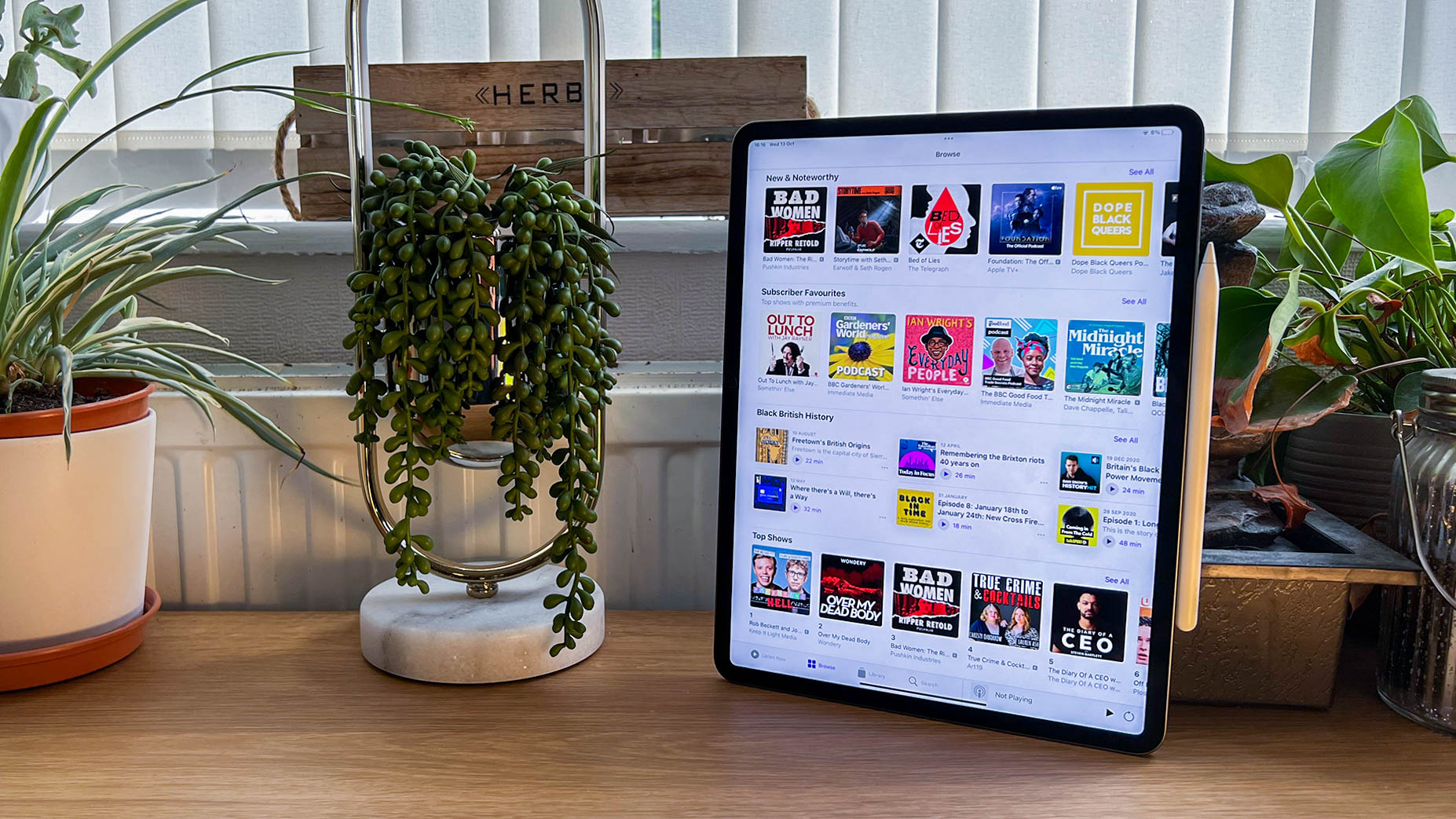
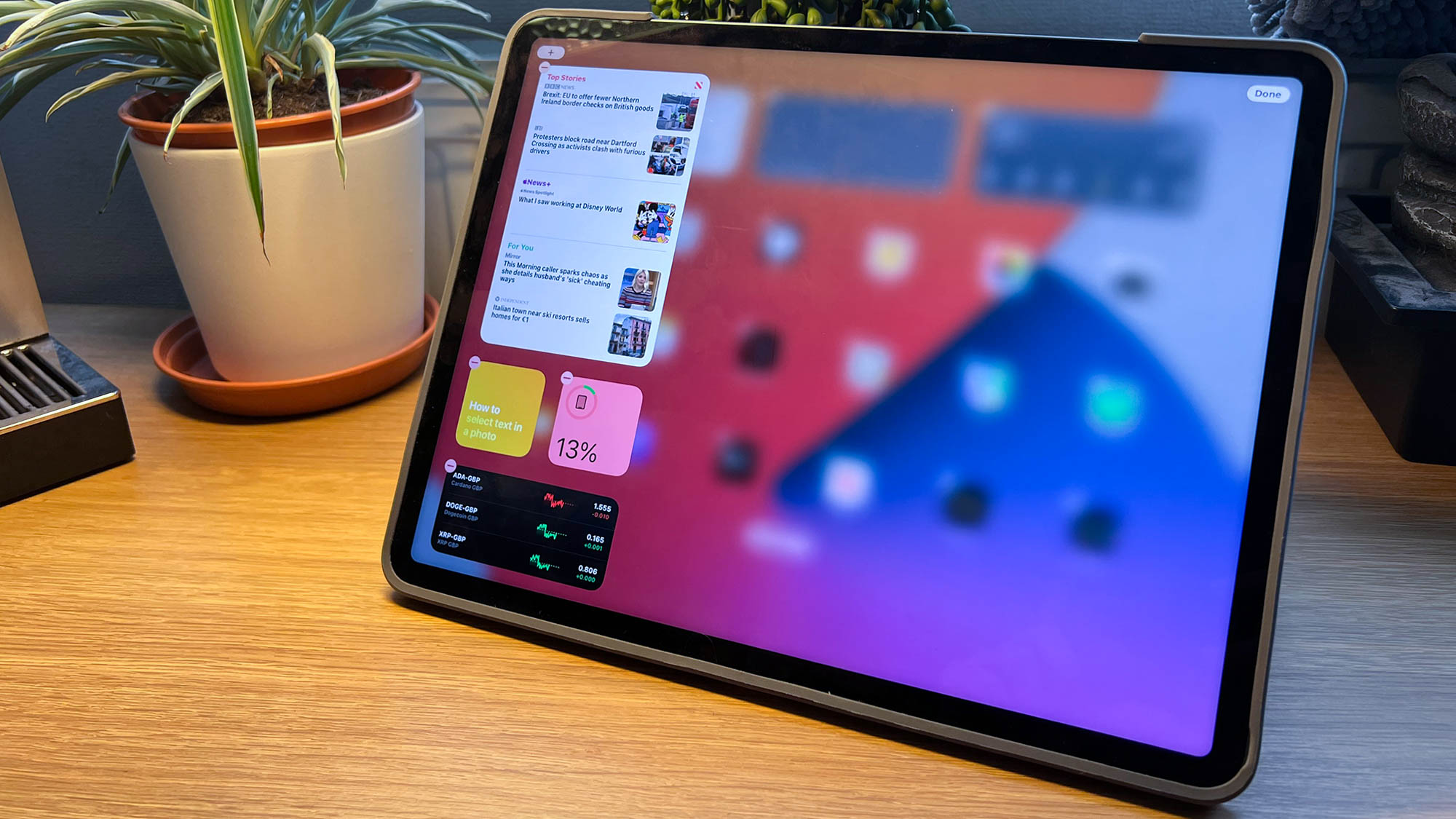

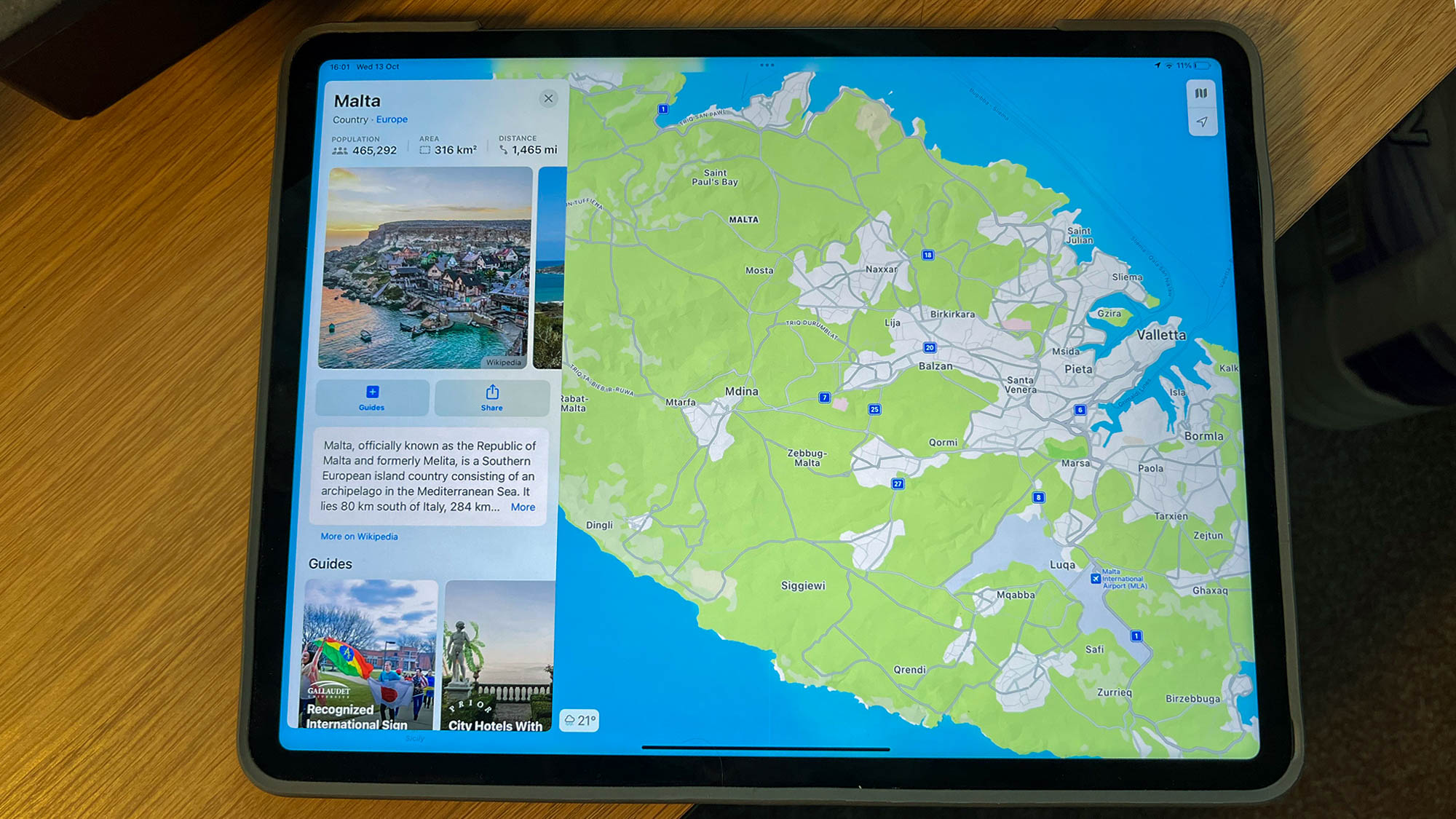
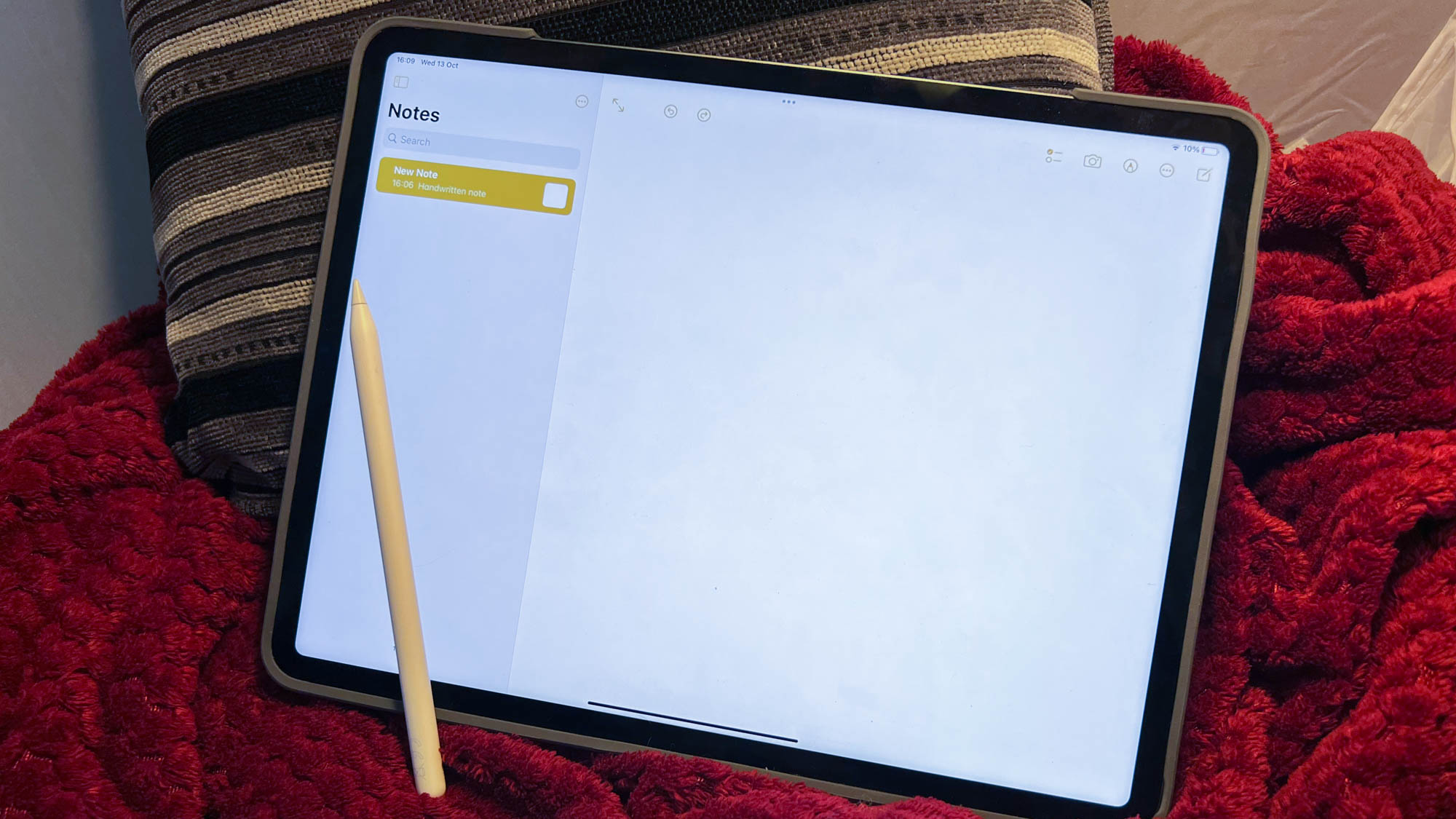
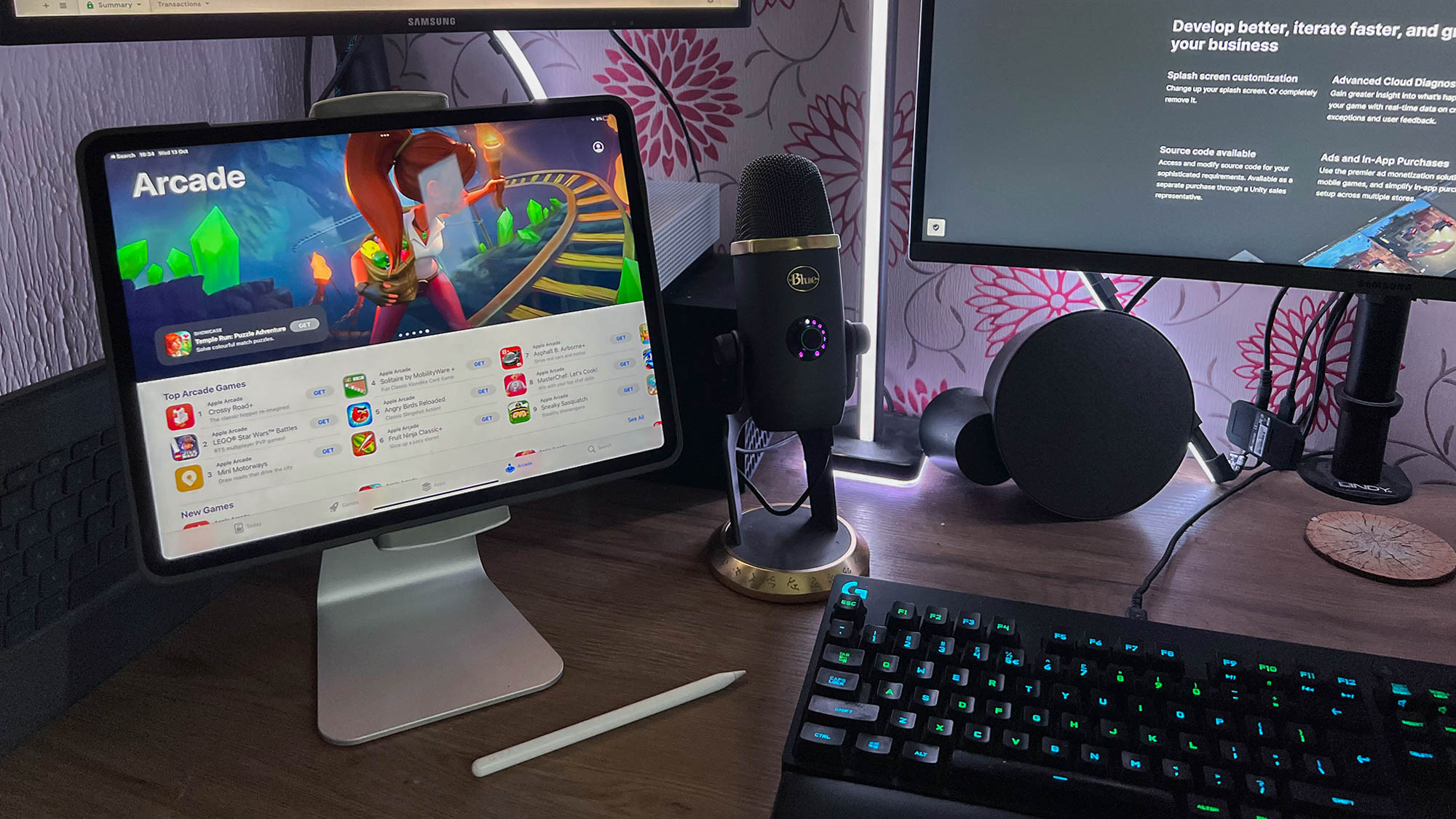
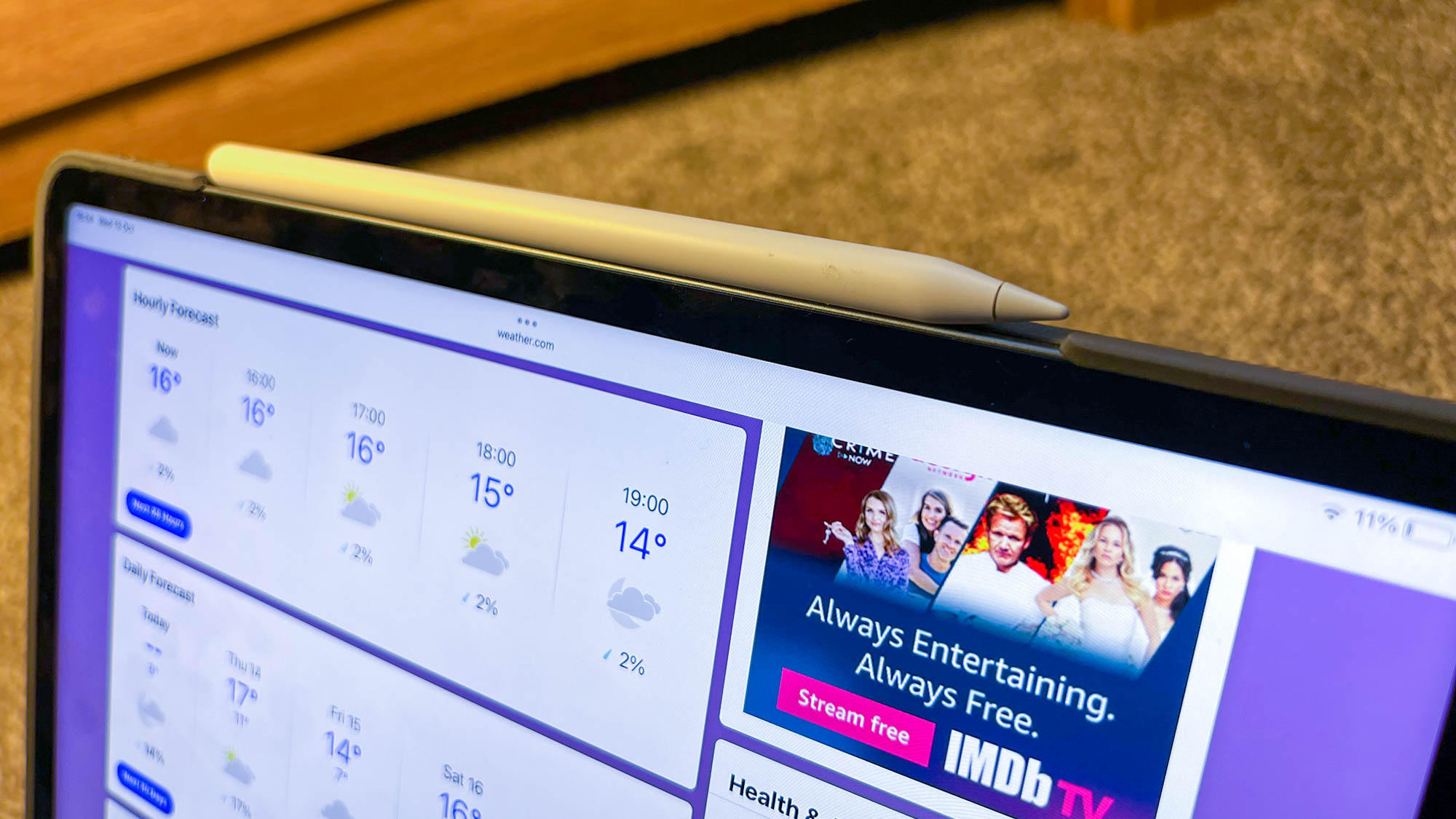
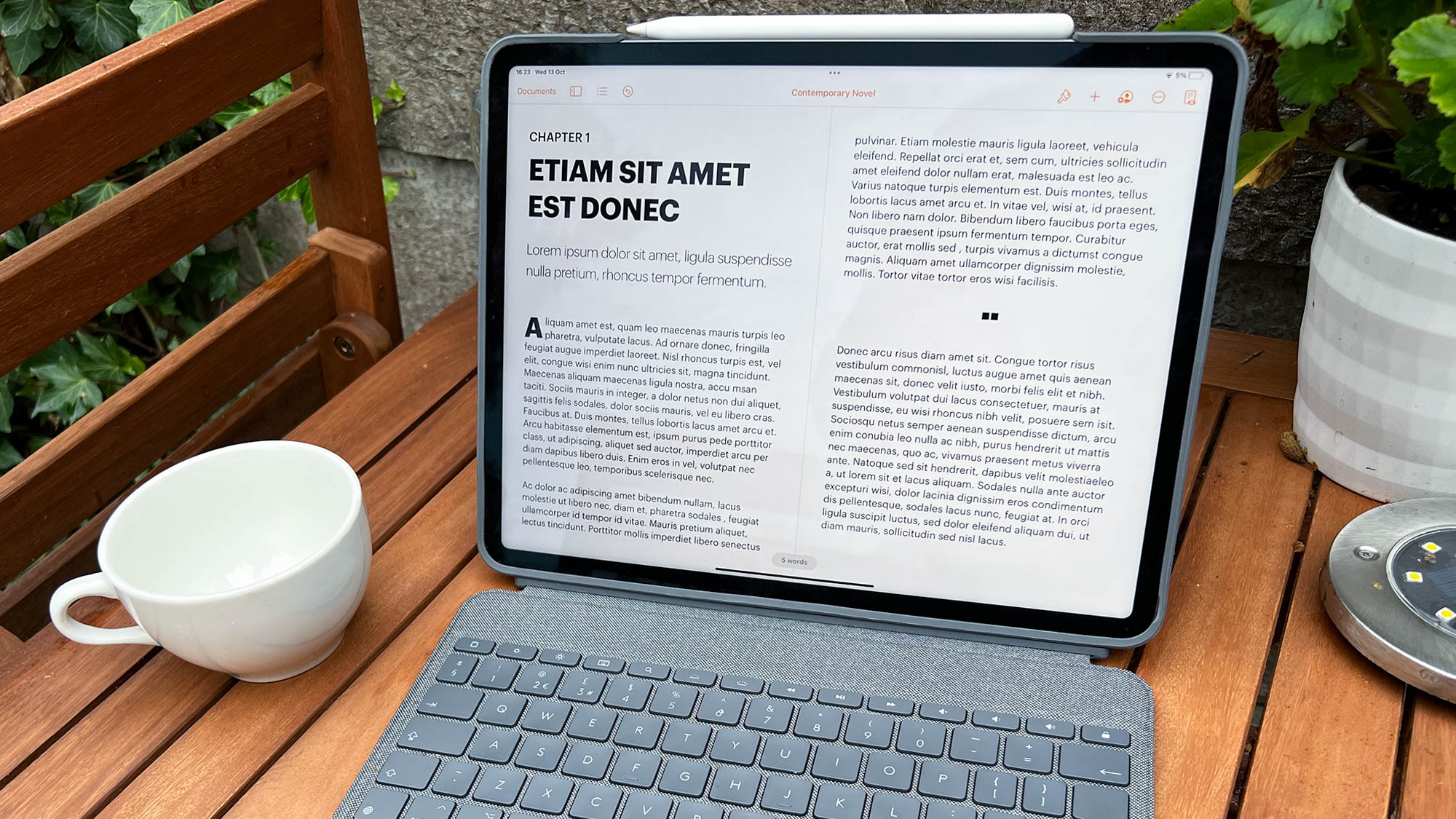
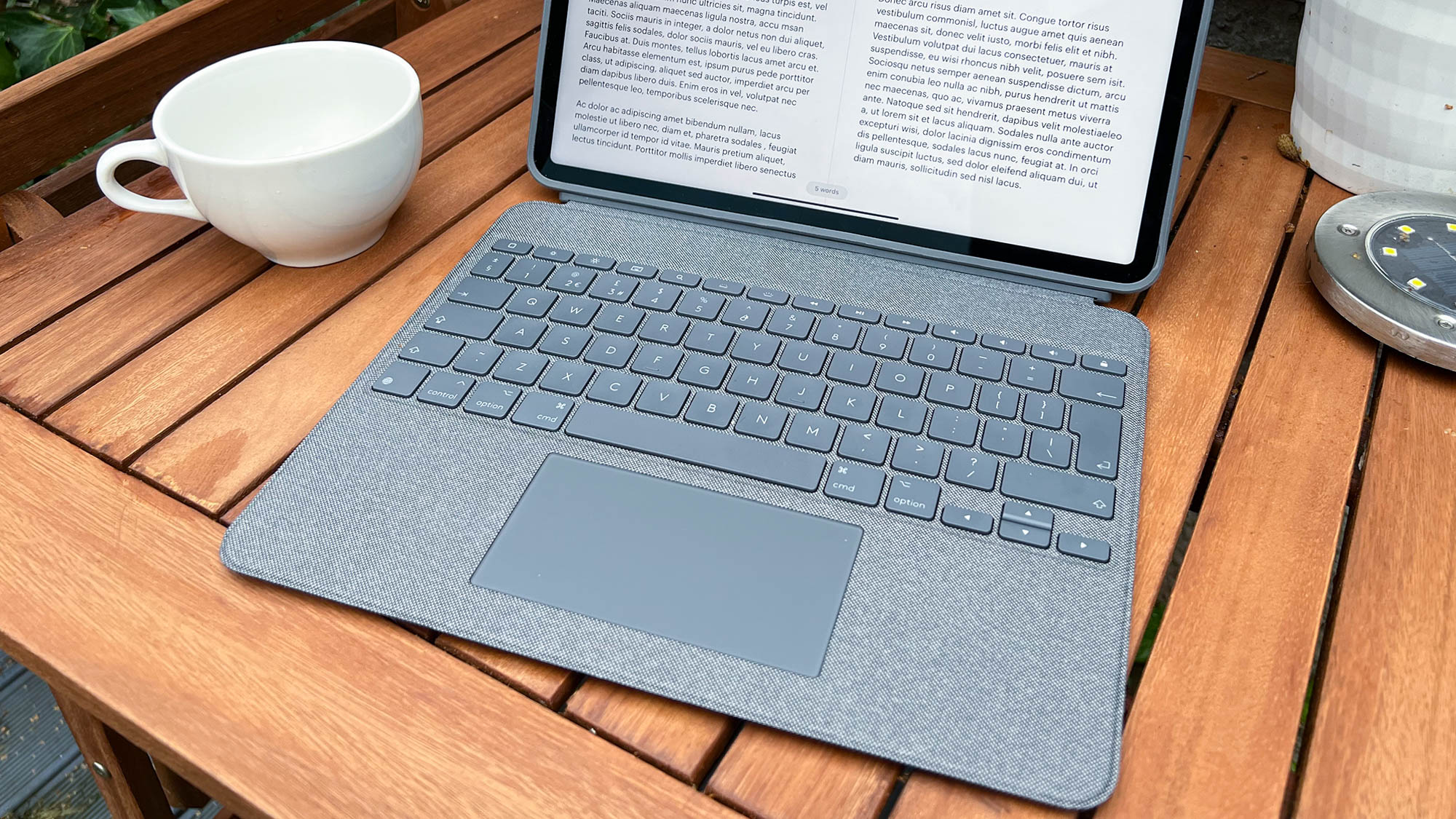
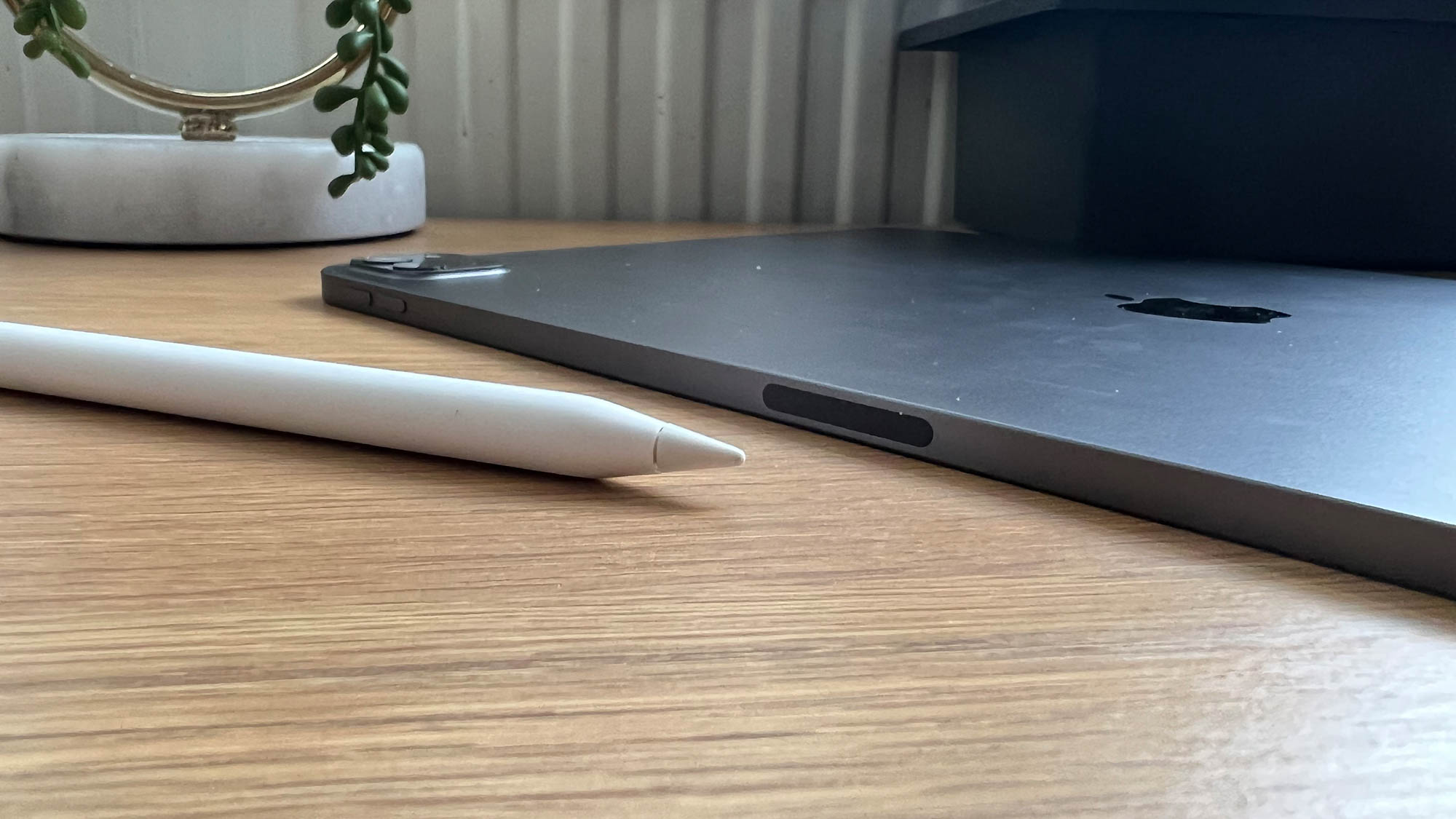
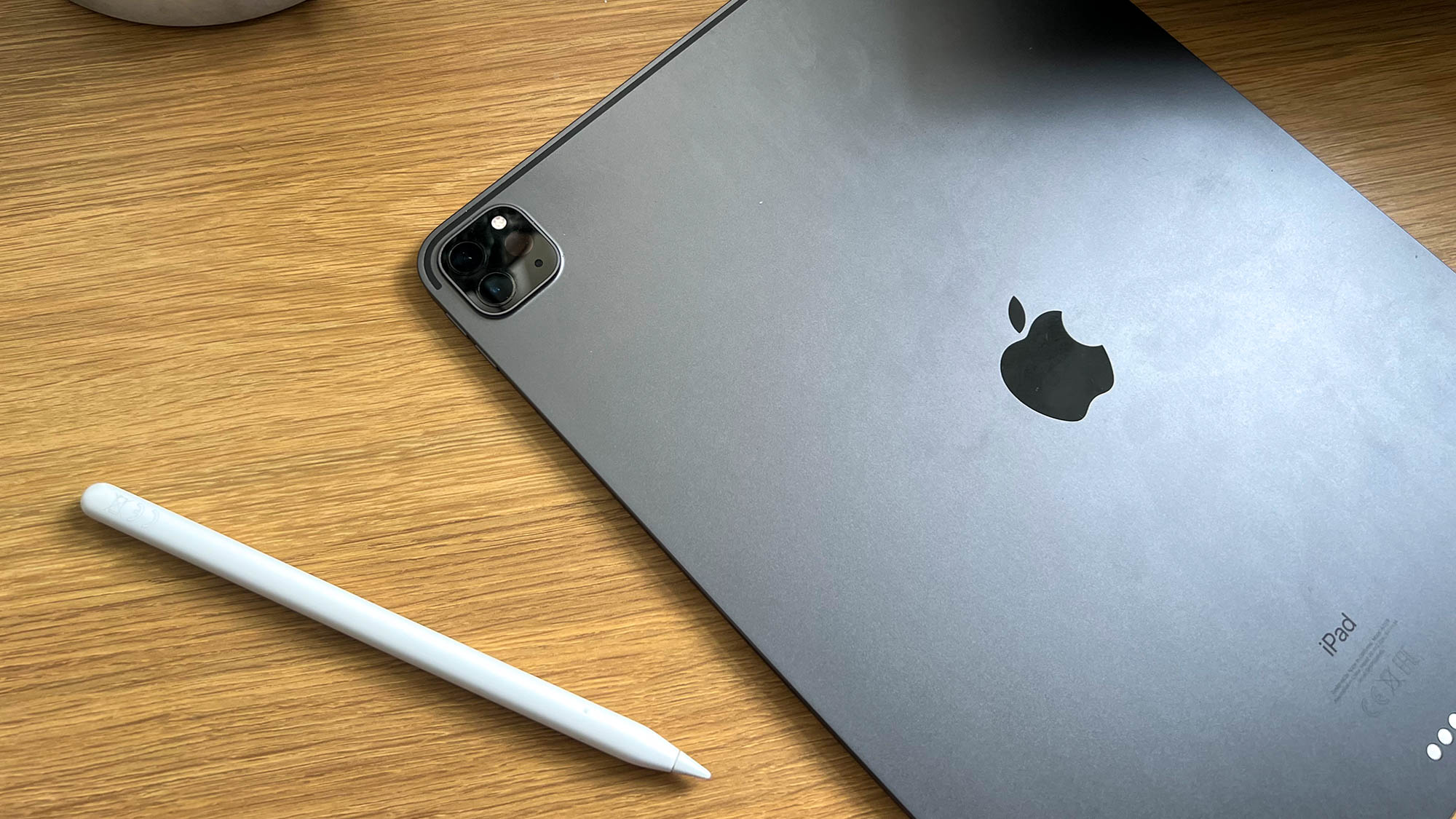
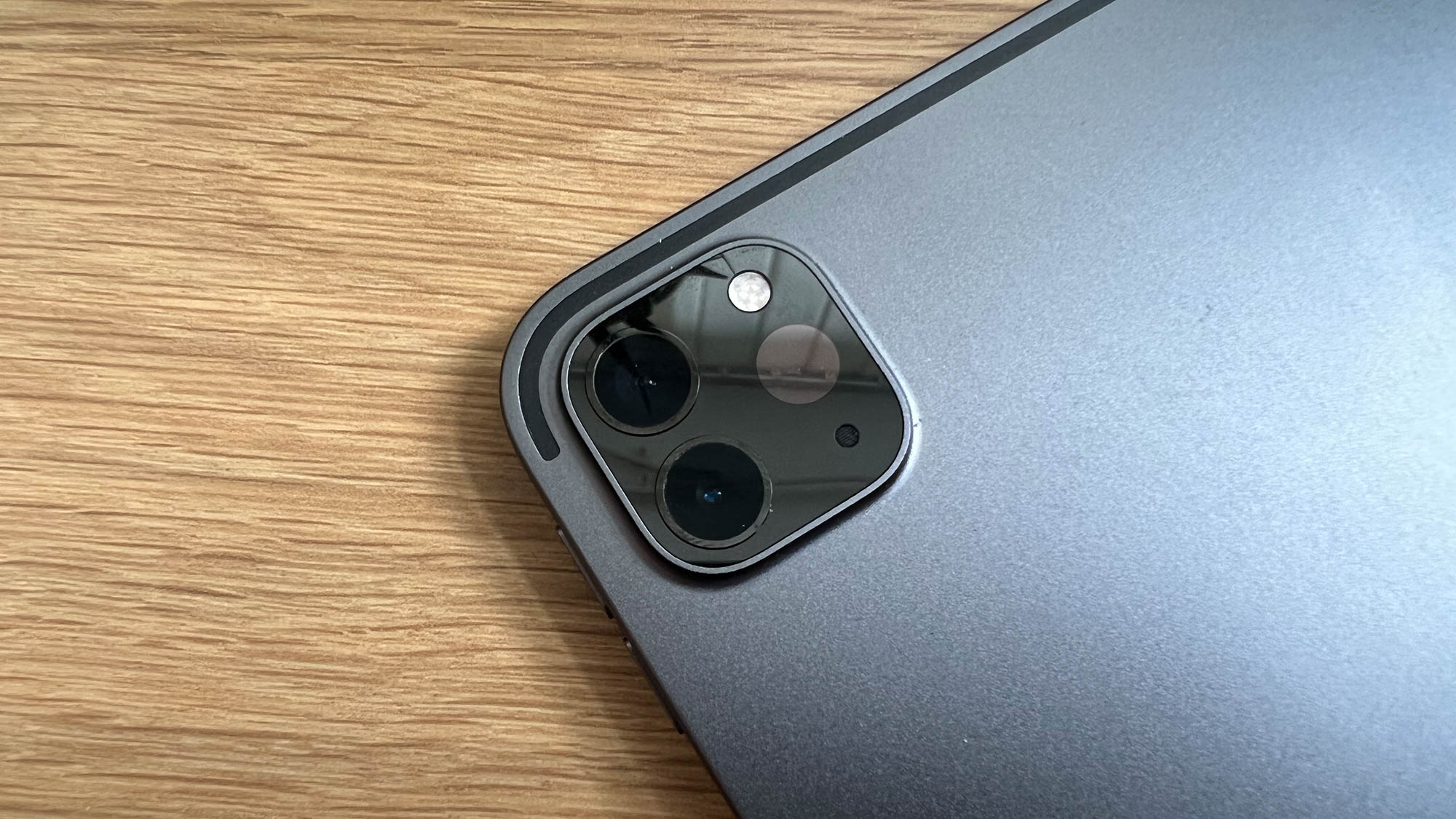
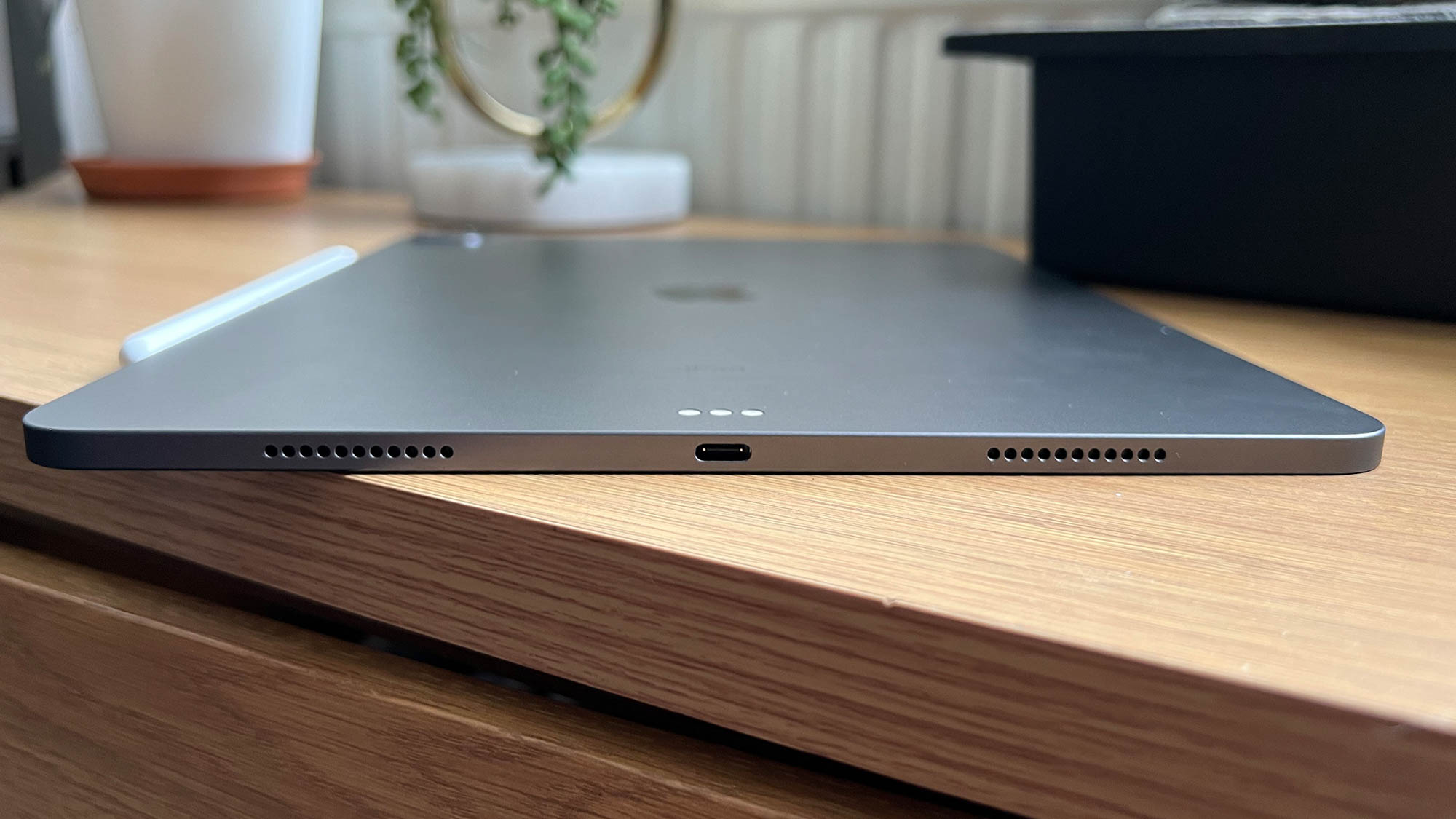
Apple might very well have an M2-powered iPad Pro waiting in the wings, potentially with a released date sometime before the end of 2022. However, there are still many reasons to buy the 2021 model of 12.9in iPad Pro.
For starters, you'll be paying that little bit less; the last year's 12.9in Pro is currently £832.50 (exc VAT) direct from the Apple store and that will look like a considerable bargain when the new one is unveiled, assuming Apple sticks to its regular pricing strategies. Also, if we look at performance, Apple's M1 chip has proven itself to be an industry-leading processor in the various Mac Books its been used, and that power has translated reasonably well into tablet form.
It is worth pointing out here, that the price of the tablet doesn't include the Apple Pencil and or keyboard. However, that will be the case for any iPad and is quite normal for other tablet providers. So for those looking at this as a laptop replacement, you need to bear in mind that there is, essentially, more to actually buy.
Apple iPad Pro 12.9in (2021) review: Design
This year's iPad Pro doesn't look all too different from the previous model. The sleek 12.9in slab’s surprisingly grippy all-metal design features aggressively smoothed corners that help combat any hand fatigue you might get from its 680g heft. Its similarly rounded “Liquid Retina” LCD display still isn’t quite edge-to-edge, but there’s room to argue that it reduces the chance of accidental brush strokes, video pauses, or page-turning that can stem from having too little space between the screen and your grip. Don't go expecting to neatly slide this into your jacket pocket, either; just because it's smaller than a laptop, you’ll still need some sort of bag handy to transport it around. It’s light, but it’s not that light.
As for how it might coordinate with your wardrobe, we’re sad to report that grey and silver are your only colour options this year. If you're hoping to kit out your small business studio in a kaleidoscope of Apple-branded colours, you're going to be relying on third-party decals and cases.
Another reason to rely on after-market cases is to add some form of Surface Pro-style kickstand. Historically, the iPad range hasn’t needed this, but now that it’s explicitly geared towards professionals, this sort of versatility really should come as standard. It's much more ergonomic for artists and designers using the Apple Pencil, and it’s very handy for anyone using their iPad Pro as a second screen for their Mac via the Sidecar feature.
Apple iPad Pro 12.9in (2021) review: Display
What puts this year’s larger iPad above its smaller sibling isn’t just the size of the screen, but the tech behind it. Simply put, it gets bright enough for Apple to consider it comparable to its $6,000 Pro Display XDR monitor—at a fraction of the price. In wielding the XDR branding, Apple is marketing this particular iPad Pro as having a screen that's accurate enough for professional and colour-critical work like digital illustrations, professional photography, and cinematic filmmaking. It’s not as high-resolution, but its much smaller footprint means its 218ppi pixel density is within spitting distance of the 264ppi achieved by Apple’s best-in-class monitor.

Regardless of whether you use this to create movies or merely consume them, anything you toss at this will be more faithfully reproduced than the average television. The advertised 1,000 cd/m2 peak brightness (up to 1,600 for HDR content) trumps the 600 cd/m2 peak of the 11in model—that’s the difference between seeing the screen in direct sunlight on the beach or opting for a print magazine instead. And in keeping the ProMotion feature of past iPad Pro models, its 120Hz refresh rate has scrolling, scribbling, and even gaming feeling almost criminally smooth.
In testing, our colourimeter detected a screen brightness measurement of around 512 cd/m2. That’s a little bit off the 600 cd/m2 typical max brightness claimed by Apple, but the test can also vouch for the screen’s colour accuracy. The 12.9in M1 iPad Pro achieved a mighty impressive result of 99.8% coverage of the sRGB colour gamut and 75.3% DCI-P3 coverage, as well as a near-perfect Delta-E rating of 0.93 - all of which means it’s more than capable of handling colour accurate professional work.
The XDR display in the 2021 iPad Pro is by far the best Apple has crammed into a portable device. It’s probably the company’s most important screen refresh since the introduction of the first Retina display iPad almost a decade ago - but it isn’t without its issues. In opting for Mini-LED over OLED, its high peak brightness can lead to distracting “blooming” effects, with even 2,596 local dimming zones—there to help HDR content pop—causing unused areas of the screen to appear more gray than black as light bleeds over. This is particularly noticeable when bright UI elements like the navigation bar are visible. If you’re easily distracted by visual stimuli and plan on using the iPad Pro for major content consumption, either wait for an OLED model or grab something like the Samsung Galaxy Tab 7+ or Lenovo Tab P11.
Apple iPad Pro 12.9in (2021) review: Specs and performance
Consisting of an ARM-based 8-core CPU and GPU processor and either 8GB or 16GB of memory depending on your configuration, the iPad Pro’s M1 chip decimates the competition where benchmarks are concerned, scoring 1,713 and 7,272 in our Geekbench 5 single and multi-core test respectively. On paper, that’s a 44% improvement over the A12Z chip in last year’s model. In simulating a graphics-intensive workload with the GFXBench 5.0 “Aztec Ruins High Tier Offscreen” test, our 8GB configuration showed around a 37% increase in performance against the previous year’s model. That’s going to be a very noticeable improvement in stability and overall smoothness in games and 3D applications.
The aforementioned 16GB configuration is locked behind a massive 1TB storage option—which really ramps the price up—but it’s absolutely worth considering if you plan on using this to crunch big, high-quality videos and images. And with Wi-Fi 6 and 5G support on cellular models, you could really put it to work ingesting footage from your distant office server.

At launch, no app was allowed to use more than 5GB of memory regardless of configuration, diluting the reason to pay extra. But iOS 15 has relaxed that limitation, making more expensive models genuinely more useful to top-level creatives. Even beyond that hyper-specific use-case, if you want your investment to last as long as Apple’s typical five-year support cycle, spending extra now could save you from a costly upgrade in a few years’ time.
For light usage, however, 8GB is more than adequate. Apple has been mocked for skimping on memory before, but it’s never been a problem thanks to the controlled optimisations of its own operating system. Chances are, you’ll be able to come back to cell-heavy spreadsheets or a CAD project a week down the line and immediately pick up where you left off. That’s the joy of always-on devices, and the iPad Pro reigns supreme for it.
Apple iPad Pro 12.9in (2021) review: Battery life
Battery life on this particular brand of machine is rated for around 10 hours of general web usage—as iPads always have been—and tests prove this to be a realistic approximation. In testing this with a low-quality looping video on airplane mode, we found the M1 iPad lasted around 13 and a half hours before calling it a day.
It’s not the kind of powerhouse result a modern ultrabook like the LG Gram can manage at a similar cost, but it’s still leaps and bounds ahead of the average household laptop. That being said, this is an absolute best-case scenario for this device and not too indicative of real-world use—we’d typically burn through 25% per two hours of aggressive work and play—but it proves that Apple’s premium tablet can still be a competent travel buddy for long-haul flights and tireless days in the office. Browsing the web and swiping through videos will keep you on the top end of this estimate, but bright HDR highlights or complex workloads will reduce your time off the charger by a noticeable margin.
Apple iPad Pro 12.9in (2021) review: Features
Beyond the killer screen, the iPad Pro 2021 doesn't bring a massive shakeup to the iPad Pro use-case in terms of external hardware. Artists will still use the same second-generation Apple Pencil, the AR-ready LiDAR sensor isn’t new, and the tracking and panning Centre Stage feature of the front-facing camera is available on the far cheaper iPad Air—where it makes more sense. What you get from this year’s flagship tablet really depends on how you use its lightning-fast chipset and screen. It’s the definitive tablet experience out of the box, but pay extra for an attachable keyboard and trackpad combo from Logitech or Apple and it can, for some, serve as the pseudo-laptop Apple insists its software allows for.

For most, it’s a brilliantly reliable multi-tasking machine, and iOS 15 simplifies the process of getting multiple apps up at once. Browsing the web with a silky-smooth 120Hz refresh rate is just easier on the eyes, and using the new one-button process to do something like book flights on one side of the screen, browse hotels on the other, and check out local amenities on a retractable instance of your favourite travel app is a convenient and almost addictively simple way to plan your next business trip.
You’ll find three cameras here total; a practically invisible front-facing camera that’s good for FaceID unlock or purchases and auto-tracking “Centre Stage” video calls, and 4K-capable wide and ultra-wide cameras (with flash) on the back. On its slender quarter-inch sides, you’ll spot four speakers, three microphones, volume keys, the power button, a USB-C port for charging/data transfer, and smart connectors for things like keyboard docks and the latest Apple Pencil.
Apple iPad Pro 12.9in (2021) review: Verdict
Apple - and almost every other tablet maker - have tried their very best to make the tablet as good an alternative to a traditional computer as possible. And in some cases it is; ever try using a stylus with a laptop? While there are some limitations to iOS and there isn't an app for everything, as much as people think there are, the iPad Pro is a pretty brilliant bit of hardware.
It offers the ultra-portability and functionality of a tablet, but with the power of an M1 chip - more powerful than we expected, to be honest. That bright XDR display is a joy to use, particularly if you're a heavy user of Adobe and other creative apps. What's more, the battery will easily see you through a work shift.
Whether or not it can replace your laptop is very much down to the way it will be used, but with improved mouse and keyboard support, increased memory options and further advances in Apple Pencil functionality, the iPad Pro makes a more compelling argument than it has ever done before.
Apple iPad Pro 12.9in (2021) specifications
| Processor | Apple M1 (8-Core CPU/GPU) |
| RAM | 8GB |
| Screen | 2048 x 2732 resolution (4:3) 12.9” mini-LED “Liquid Retina XDR”, 120Hz, HDR (1600 cd/m2 peak) |
| Front camera | 12 MP ultrawide (1080p @ 60fps) |
| Rear camera | 12 MP wide-angle, 10 MP ultrawide, LiDAR depth sensor, quad dual-tone flash (4k @ 60fps or 1080p @ 240fps) |
| Dust and water resistance | No |
| 3.5mm headphone jack | No |
| USB connection type | USB-C (USB 4 / Thunderbolt 4) |
| Storage options | 128GB/256GB/512GB/1TB/2TB |
| Memory card slot (supplied) | No |
| Wi-Fi | Wi-Fi 6 |
| Bluetooth | Bluetooth 5.0 |
| NFC | No |
| Cellular data | 5G |
| Dimensions (WDH) | 280.6 x 214.9 x 6.4 mm |
| Weight | 682g |
| Operating system | iOS 15 |
| Battery size | 40.88 Wh |
Get the ITPro daily newsletter
Sign up today and you will receive a free copy of our Future Focus 2025 report - the leading guidance on AI, cybersecurity and other IT challenges as per 700+ senior executives
-
 M&S suspends online sales as 'cyber incident' continues
M&S suspends online sales as 'cyber incident' continuesNews Marks & Spencer (M&S) has informed customers that all online and app sales have been suspended as the high street retailer battles a ‘cyber incident’.
By Ross Kelly Published
-
 Westcon-Comstor unveils new managed SOC solution for Cisco partners
Westcon-Comstor unveils new managed SOC solution for Cisco partnersNews Powered by Cisco XDR, the new offering will enable partners to tap into new revenue streams, the company said
By Daniel Todd Published
-
 More than 5 million Americans just had their personal information exposed in the Yale New Haven Health data breach – and lawsuits are already rolling in
More than 5 million Americans just had their personal information exposed in the Yale New Haven Health data breach – and lawsuits are already rolling inNews A data breach at Yale New Haven Health has exposed data belonging to millions of people – and lawsuits have already been filed.
By Emma Woollacott Published